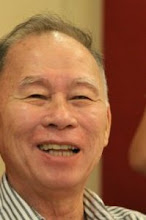There are many surprising concepts that can be lifted from
the results of Good Country Index of Arnold Anholt. Using a wide range of data
from the U.N. and other international organisations, he started a very
large-scale study that polls a very large sample of the world's population, a
sample that represents about 70 percent of the planet's population, which answered
a series of questions about how they perceive other countries. And this study
over the years has grown to be a very, very large database of about 200 billion
data points tracking what ordinary people think about other countries and why.
The original idea of the Good Country Index is pretty
simple: to measure what each country on earth contributes to the common good of
humanity, and what it takes away. The findings are therefore based on the majority
views of the citizens of only one superpower left on the planet and that is the
seven billion people, the seven billion of us who cause all our problems, the
same seven billion, by the way, who will resolve them all.
The index pointed out Ireland as the “goodest country”.
But to us Pinoys this is of little consequence. Our interest
on the study should be on matters that made Ireland the “goodest”, so we can
determine how we can the attract the world’s attention.
If a country has a great, positive image, like Germany has
or Sweden or Switzerland, everything is easy and everything is cheap. You get
more tourists. You get more investors. You sell your products more expensively.
If, on the other hand, you have a country with a very weak or a very negative
image, everything is difficult and everything is expensive. So governments care
desperately about the image of their country, because it makes a direct
difference to how much money they can make, and that's what they've promised
their populations they're going to deliver.
This concept is also applicable to individuals. If someone
has a very negative image, others will shy away from him/her. And this image
can be built only by the individual, because one who looks inwards have a mind
that microscopes- talks without listening. He/she does not have a mind that
telescopes. A mind that telescopes considers others around him/her. And thus opens
up a two-way street.
Once citizens of a country radiate a good positive image,
they can make demands on the choice of their leaders, on their employers, on
society and on ourselves. It’s a long but attainable process.
At any rate, our country placed 114th “goodest”
country in the index. Syria is 113th, while Iran placed 115th.
We got positive points due to our International students, Creative goods
exports, Peacekeeping troops, Charity Giving, Biocapacity reserve (2009), Open
trading, and Food aid. We are therefore presumed takers, not givers in the
other fields.
So, let’s work on ourselves first.
http://www.ted.com/talks/simon_anholt_which_country_does_the_most_good_for_the_world?language=en



